Inside Andersonville: Unveiling the Horrors of the Civil War’s Infamous Prison
Andersonville Prison, officially known as Camp Sumter, remains one of the most infamous prisoner-of-war (POW) camps in American history. Established by the Confederacy during the American Civil War, it was intended as a temporary facility but quickly devolved into a death trap for Union prisoners.
The prison, located in rural Georgia, became synonymous with suffering, disease, and starvation. Overcrowded and poorly supplied, it housed thousands of Union soldiers in unthinkable conditions, leading to nearly 13,000 deaths in just over a year. Andersonville stands as a grim reminder of the harsh realities of war, and its legacy continues to influence discussions on prisoner treatment and military ethics.
This article explores the creation, conditions, and legacy of Andersonville, highlighting the voices of those who lived and died behind its wooden walls.
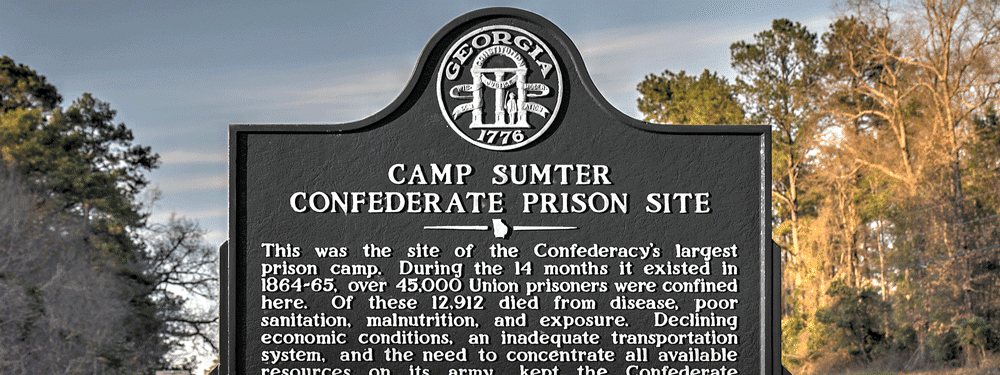
The Establishment of Andersonville Prison
By 1864, the Confederate government faced mounting challenges in managing the ever-growing number of captured Union soldiers. Existing prisoner-of-war camps were overcrowded, unsanitary, and lacked sufficient resources. To address this crisis, Confederate officials sought to establish a new facility that would alleviate pressure on other camps while ensuring prisoners remained securely detained. After careful consideration, a site in Sumter County, Georgia, was selected. This location, later known as Andersonville Prison or Camp Sumter, was chosen for its remote setting, proximity to vital rail lines, and access to what was believed to be an adequate water source.
Andersonville’s location was strategically selected to minimize the risk of Union raids aimed at liberating prisoners. Situated deep within Confederate territory, it was far from major battlefronts, making it less vulnerable to attack. Additionally, the surrounding dense forests and difficult terrain provided natural barriers that would make escape attempts difficult. Another key factor in the site’s selection was its nearness to the Southwestern Railroad, which allowed for the efficient transport of prisoners from other camps across the South. This logistical advantage meant that thousands of captives could be relocated to Andersonville quickly, though Confederate officials underestimated the strain this would place on the new facility.
Construction of Andersonville Prison began in late 1863 and was overseen by Confederate Captain W. Sidney Winder, who had been assigned to manage its development. The prison’s initial design called for a stockade enclosure of approximately 16.5 acres, surrounded by a 15-foot-high wooden fence made of rough-hewn pine logs. Guard towers were positioned at regular intervals along the perimeter, allowing Confederate sentries to monitor the prisoners inside. The prison also included a small creek, Stockade Branch, which was intended to provide drinking water and drainage. However, no provisions were made for wells or additional water sources, a flaw that would prove disastrous as the prison population grew.
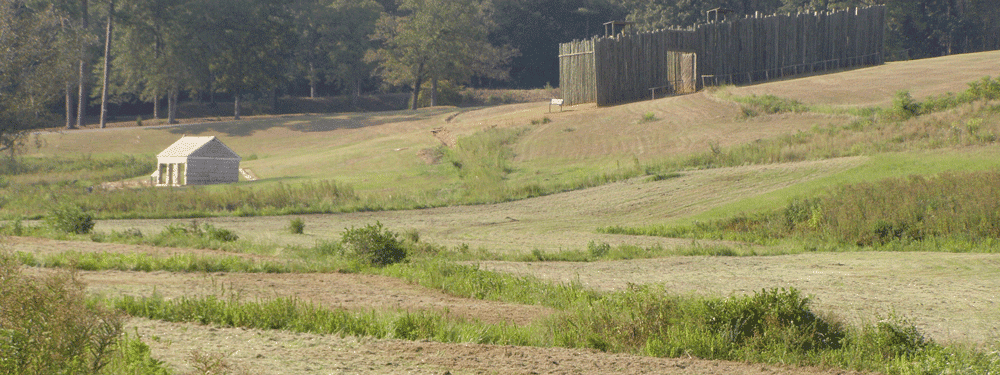
Although the original plan was to house no more than 10,000 prisoners, the realities of war quickly outpaced expectations. The first group of Union prisoners arrived at Andersonville in February 1864, and within a matter of months, the prison’s population swelled far beyond its intended capacity. As the war dragged on, Confederate authorities rushed to expand the stockade, adding an additional 10 acres by June 1864. However, even these efforts were insufficient, as the number of captives continued to rise. The relentless influx of prisoners, combined with limited resources and wartime shortages, would soon turn Andersonville into one of the most notorious prison camps in American history.
Despite the rapid expansion of Andersonville, Confederate officials struggled to maintain control over the facility. Captain Henry Wirz was appointed as the commandant of the prison in March 1864 and was tasked with overseeing its operations. Though he attempted to enforce discipline and manage the overwhelming number of prisoners, he was given little support from the Confederate government. Supplies were scarce, infrastructure remained inadequate, and logistical failures plagued the camp from its inception. The establishment of Andersonville Prison, though initially conceived as a solution to overcrowding, ultimately set the stage for one of the darkest chapters of the Civil War.
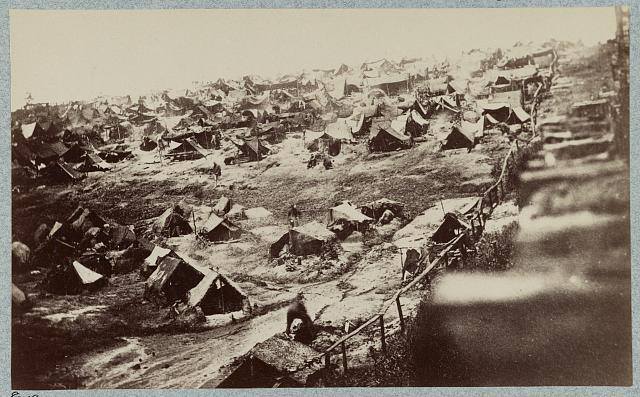
Harsh Conditions Inside Andersonville
From the moment Union prisoners arrived at Andersonville, they were met with unthinkable hardships. Unlike other prisoner-of-war camps that offered some form of shelter, Andersonville provided nothing. The stockade was simply an open-air prison with no barracks, forcing men to fend for themselves. Lacking proper supplies, many dug holes in the ground or attempted to construct crude shelters using scraps of fabric, branches, or discarded clothing. Those without even these makeshift protections suffered through scorching summers, torrential downpours, and freezing nights. Exposure to the elements and a lack of clothing and blankets made survival a constant battle.
The extreme overcrowding of Andersonville exacerbated every problem within the camp. Designed to hold 10,000 prisoners, it eventually confined more than 45,000 men within its wooden walls. With space at a premium, prisoners were packed so tightly together that movement was restricted, and finding a small patch of ground to sleep on became a daily struggle. The massive influx of captives and poor planning resulted in a breakdown of order. Men had little room to cook what little food they had, clean themselves, or even dig latrines. The lack of sanitation and close quarters led to rapid disease outbreaks that would prove as deadly as starvation.
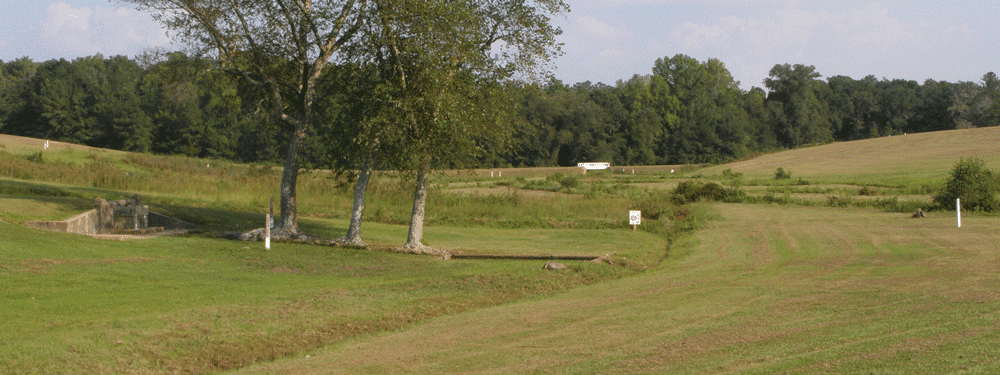
One of the most severe crises at Andersonville was the complete failure of the water supply. The small creek running through the prison, known as Stockade Branch, was supposed to provide drinking water, but with thousands of prisoners using it for bathing, waste disposal, and drinking, it became a source of disease rather than relief. The stagnant, contaminated water led to the spread of dysentery and other deadly illnesses. Prisoner John McElroy later described the grim reality:
“The water we drank was thick with filth, and the stench that rose from it was unbearable. We had no choice but to drink it and pray it did not kill us.”
The lack of alternative water sources meant prisoners were left with no option but to consume the tainted supply, worsening the already dire situation.
Food was another major issue at Andersonville. The Confederate government, struggling with supply shortages for its own army, provided only the bare minimum for the thousands of starving prisoners. Rations consisted mostly of coarse cornmeal, occasionally supplemented with meager portions of beans or rancid meat, if available. Many of the prisoners, unaccustomed to such a diet, suffered from severe digestive issues, leading to further malnutrition. As food supplies dwindled, some prisoners resorted to eating rats, insects, or anything they could scavenge, desperately trying to stay alive. The lack of vital nutrients led to widespread scurvy, leaving men with swollen gums, loose teeth, and sores that refused to heal.
Disease ran rampant through the camp without access to medicine or proper hygiene. Dysentery, scurvy, and gangrene became common afflictions, and the lack of medical care meant even minor wounds could become fatal. The few Confederate surgeons stationed at the camp were overwhelmed, with little more than basic tools and no supplies to treat the sick. Prisoners who fell ill were often left to suffer, as there were no proper facilities to isolate the infected. The makeshift hospital outside the stockade had neither enough staff nor resources to care for the thousands of men in need. As conditions worsened, Andersonville became less of a prison and more of a mass grave, with death an ever-present specter haunting those who remained.

The Infamous Stockade and the Dead Line
The Andersonville stockade was a towering 15-foot-high wooden enclosure, built to contain Union prisoners and prevent escape attempts. Constructed from rough-hewn pine logs, the stockade created a nightmarish, claustrophobic prison environment. Watchtowers were positioned along the perimeter, allowing Confederate guards to observe the prisoners’ every move. Armed with rifles, these guards had orders to shoot any captive attempting to flee. The towering walls, combined with the sheer number of prisoners crammed inside, made Andersonville a virtual death trap, where escape was nearly impossible.
One of the most feared features of Andersonville was the Dead Line, an ominous boundary that ran just a few feet inside the stockade walls. Marked by wooden posts, it served as a fatal warning to prisoners. Any man who stepped beyond it—whether intentionally or by accident—would be shot without question. Guards stationed in the watchtowers maintained a constant vigil, and many took pleasure in enforcing the rule with deadly precision. Survivor Dorence Atwater later recalled: “Men would step too close in desperation for clean water and be cut down without hesitation. The dead lined the fence like warnings to those who remained.”
For the prisoners trapped inside Andersonville, the Dead Line became a symbol of hopelessness. It underscored the reality that escape was almost unthinkable, reinforcing the psychological torment they endured daily. With no physical barriers separating them from the line, some men crossed it out of desperation, seeking cleaner water or a moment’s respite from the unbearable conditions. Others, weakened by starvation and disease, stumbled too close unintentionally and were gunned down instantly. The rigid enforcement of the Dead Line made it one of the most feared elements of the prison.

Despite the overwhelming odds, some prisoners did attempt to escape Andersonville. A few daring men managed to tunnel beneath the stockade walls, using crude tools or even their bare hands to dig through the hard-packed earth. Others took advantage of prisoner transfers, disguising themselves or slipping away in the chaos. However, most escape attempts ended in failure. Confederate patrols, thick Georgia swamps, and the sheer physical weakness of the prisoners made reaching Union lines nearly impossible. Those who were caught were either executed or returned to the prison, where they faced even harsher treatment.
Even with the looming threat of the Dead Line, some prisoners preferred to risk death rather than remain in Andersonville’s brutal conditions. Stories circulated of men who deliberately crossed the line, choosing a swift end by gunfire rather than the slow agony of starvation or disease. For many, the stockade walls and the Dead Line were not just physical barriers—they represented the inescapable nightmare of Andersonville, where death lurked at every corner and freedom seemed like a distant dream.
Famous Soldiers Housed at Andersonville and Confederate Guards’ Accounts
Andersonville held thousands of Union prisoners, among them notable figures whose accounts helped shape public understanding of the prison’s horrors. One such soldier was Sergeant Major Robert H. Kellogg of the 16th Connecticut Infantry, who arrived in May 1864. His later writings detailed the unbearable conditions he witnessed, describing the suffering of men who lacked food, shelter, and medical care. Another well-known prisoner was Dorence Atwater, a Union soldier who secretly kept a list of deceased prisoners despite Confederate efforts to suppress such records. His documentation would later serve as crucial evidence in trials against those responsible for the prison’s atrocities.
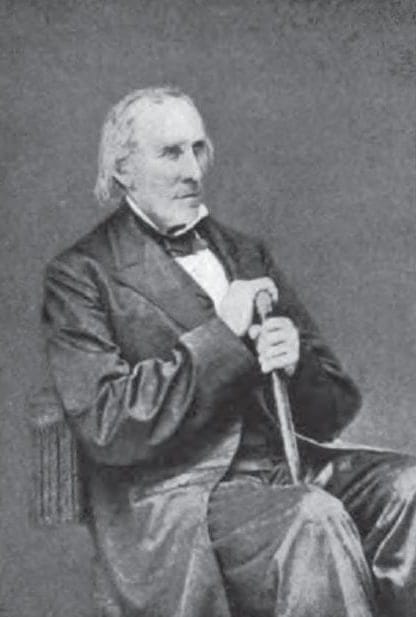
One of the most famous individuals to survive Andersonville was Father Peter Whelan, a Catholic priest from Savannah who voluntarily entered the prison to minister to the suffering prisoners. Unlike many others, Whelan was not a prisoner himself but chose to remain inside, offering what little comfort he could. He helped distribute food and provided last rites to the dying, earning him the title “Angel of Andersonville.” His efforts, though limited by Confederate restrictions, left a lasting impression on survivors who recalled his kindness amid the brutality of their imprisonment.
While prisoners suffered unimaginable conditions, the Confederate guards stationed at Andersonville also faced difficulties, though their plight was far less severe. Many of the guards were young, inexperienced soldiers or older men deemed unfit for combat. These men, often conscripts or wounded veterans recovering from battle, were assigned to Andersonville out of necessity rather than choice. Some expressed sympathy for the prisoners but could do little to alleviate their suffering. In letters and diaries, some guards admitted to feeling powerless, acknowledging that they were following orders in a system that was already failing due to the Confederacy’s crumbling infrastructure.
Despite this, Confederate soldiers stationed at Andersonville often justified the camp’s harsh conditions by pointing to the Union’s suspension of prisoner exchanges in 1864. They believed that the lack of supplies was due to wartime shortages rather than deliberate cruelty. However, others took advantage of their position, abusing prisoners and enforcing brutal discipline. Former guard accounts suggest that while some guards looked upon the prisoners with pity, others saw them as enemies undeserving of mercy. This divide contributed to the inconsistent treatment of captives, with some prisoners receiving occasional kindness while others suffered from extreme neglect or violence.
Captain Henry Wirz, the camp’s notorious commandant, became the face of the Confederate administration at Andersonville. His interactions with both prisoners and guards remain controversial. Some accounts suggest he struggled with limited resources and made attempts to alleviate suffering, while others portray him as a ruthless figure who ignored the prisoners’ plight. Wirz’s trial and execution after the war would cement his place in history as one of the few individuals held directly accountable for Andersonville’s horrors. Regardless of individual culpability, Andersonville remains one of the darkest chapters of the Civil War, a place where both prisoners and guards found themselves trapped in an unfolding humanitarian disaster.
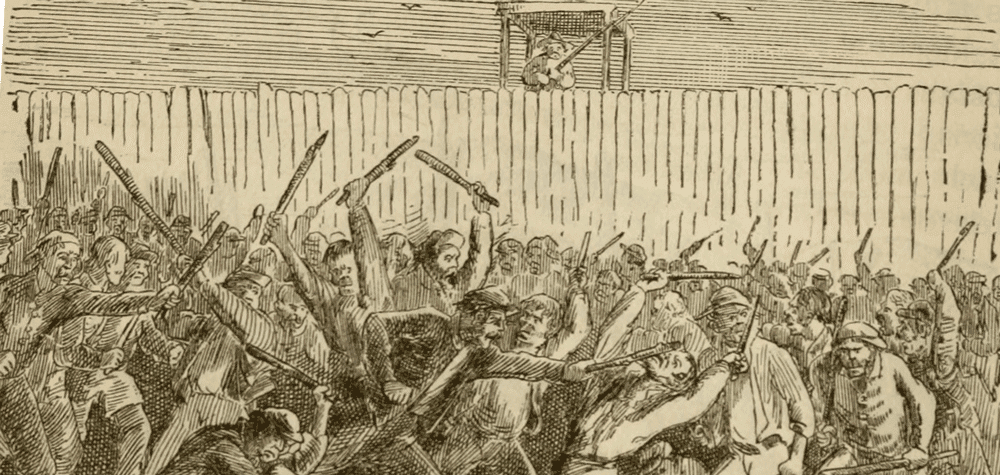
The Raiders and Regulators
Survival in Andersonville was brutal, and while disease, starvation, and Confederate neglect were constant threats, prisoners also faced danger from within. A ruthless gang known as the “Raiders” emerged among the inmates, preying on their fellow captives. These lawless men stole food, clothing, and personal belongings from the weak and sick, often resorting to violence or even murder. With supplies already scarce, their actions made life even more unbearable for those struggling to stay alive. The Renegades operated with little fear of punishment, as Confederate guards did nothing to intervene, allowing chaos to spread within the prison walls.
In response to the violence, a group of prisoners took it upon themselves to restore order. Calling themselves the “Regulators,” these men organized a self-imposed justice system to punish the Raiders. With the reluctant approval of the Confederate commandant, Henry Wirz, they established a makeshift court inside the prison. Prisoners served as judges, jurors, and enforcers, holding trials where accused Renegades were forced to answer for their crimes. The trials were swift, and the punishment severe—some Raiders were beaten, others were banished, and the worst offenders were sentenced to death.
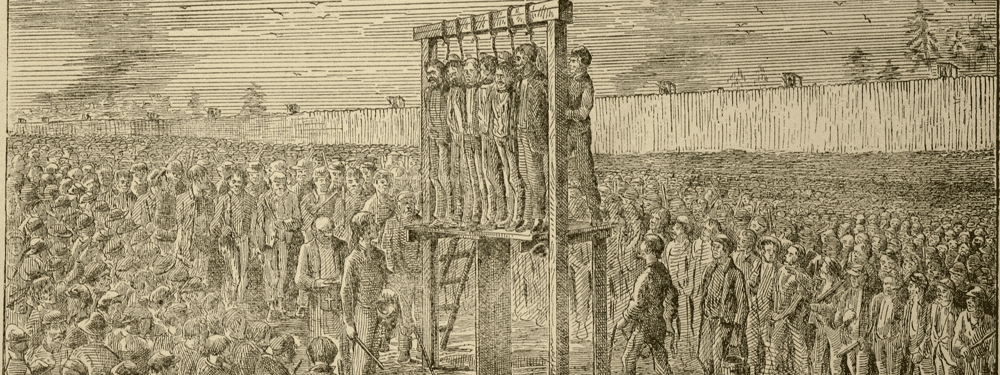
In July 1864, the Regulators carried out their most decisive act of justice. After convicting several of the worst Renegades, they executed six men by hanging in front of thousands of prisoners. The event was both a warning and a moment of grim relief for many captives, who had suffered under the lawlessness of their fellow inmates. While the executions did not end crime inside Andersonville, they significantly reduced the power of the Renegades and restored some sense of order among the prisoners. The Regulators’ actions became one of the few instances where prisoners took control of their fate, even in the face of overwhelming suffering.
The Liberation & Public Reaction to Andersonville
In early April 1865, as the Confederacy crumbled under the weight of Union advances, Andersonville Prison was effectively abandoned. With Confederate forces retreating, the last remaining prisoners were either released or transferred to other locations. When Union troops arrived, they discovered what many survivors described as a “hell on earth.” Emaciated men, barely clinging to life, emerged from the filthy, disease-ridden stockade, many too weak to walk. The full scale of the suffering became immediately clear, shocking even the most battle-hardened soldiers. Reports from the liberating forces painted a picture of starvation, filth, and the mass graves that surrounded the prison site.
News of Andersonville’s horrors spread quickly across the North, provoking outrage. The discovery of thousands of unmarked graves and the skeletal remains of once-healthy Union soldiers fueled demands for justice. Newspapers published harrowing survivor accounts, describing the overcrowding, lack of food, and brutal enforcement of the Dead Line. The American public, already angered by the war, found in Andersonville a potent symbol of Confederate cruelty. Political leaders and the press called for severe punishment of those responsible, especially Henry Wirz, the prison’s commandant. Andersonville became a rallying cry for many who sought accountability for wartime atrocities.

For survivors, the suffering did not end with liberation. Many former prisoners were too weak to travel home immediately and required months of medical care. Diseases contracted in Andersonville, such as dysentery and scurvy, left long-term effects on their bodies. Some men never fully recovered from the psychological trauma of their imprisonment. Survivors’ testimonies, however, played a crucial role in shaping the public perception of Andersonville. Firsthand accounts, such as those written by Sergeant Robert H. Kellogg and Dorence Atwater, documented the nightmare they endured, ensuring that the memory of Andersonville’s horrors would not be forgotten.
The public reaction to Andersonville also influenced Reconstruction-era politics. The North viewed the prison as undeniable proof of Confederate brutality, reinforcing demands for harsher measures against former Confederate leaders. While some in the South defended Andersonville’s conditions as a result of supply shortages rather than deliberate cruelty, this argument failed to sway Northern audiences. The emotional weight of the survivor accounts left little room for sympathy toward those in charge. Calls for retribution intensified, culminating in the war crimes trial of Henry Wirz.
The sheer scale of suffering at Andersonville made it a focal point for post-war discussions on the treatment of prisoners of war. It underscored the need for international agreements on POW rights, influencing future military policies. As Union veterans recounted their time in Andersonville, their stories became part of a broader national narrative on the Civil War, one that ensured the prison’s horrors would remain etched in American history. Andersonville was no longer just a place—it was a symbol of human suffering, resilience, and the consequences of war.
The Trial of Henry Wirz and Aftermath
As the Civil War ended in 1865, Union authorities sought to hold Confederate officials accountable for their actions, and Henry Wirz, commandant of Andersonville Prison, became one of the most prominent figures to face trial. Arrested and charged with war crimes, including conspiracy to commit murder, Wirz stood accused of overseeing the inhumane treatment and mass deaths of Union prisoners. His case, one of the first war crimes trials in U.S. history, drew national attention, with both Union and Confederate sympathizers closely following the proceedings.
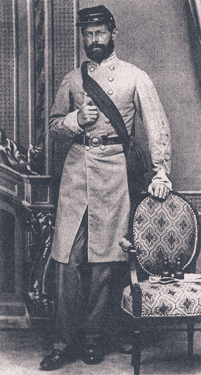
Tried in Washington, D.C., Wirz faced testimony from over 100 witnesses, many of them former Andersonville inmates who described starvation, rampant disease, and the deadly enforcement of the Dead Line. Some recounted instances of Wirz personally ordering executions and mistreating prisoners, while others argued he was simply following Confederate directives. Regardless, the overwhelming weight of these accounts painted a harrowing picture of Andersonville under his leadership, making Wirz a central figure in the national reckoning over wartime atrocities.
Throughout the trial, Wirz maintained his innocence, arguing that he had simply been following orders from Confederate leadership and had no means to improve conditions at the prison. He insisted that the lack of food, medicine, and shelter was due to the Confederacy’s dwindling resources, not deliberate cruelty. However, the prosecution dismissed this defense, emphasizing the extreme suffering and high mortality rate at Andersonville. With public outrage at a boiling point, the trial became less about Wirz as an individual and more about holding someone accountable for the war’s most notorious prisoner-of-war camp.
On November 10, 1865, Henry Wirz was found guilty and sentenced to death. He was hanged in Washington, D.C., becoming one of the only Confederate officials executed for war crimes. His execution was widely publicized, with some viewing him as a scapegoat for the broader failures of the Confederate prison system, while others saw his death as necessary justice for the thousands who perished under his watch. Despite lingering debates about whether he was solely responsible for Andersonville’s horrors, his trial set a precedent for the prosecution of war crimes and left a lasting imprint on American military history.
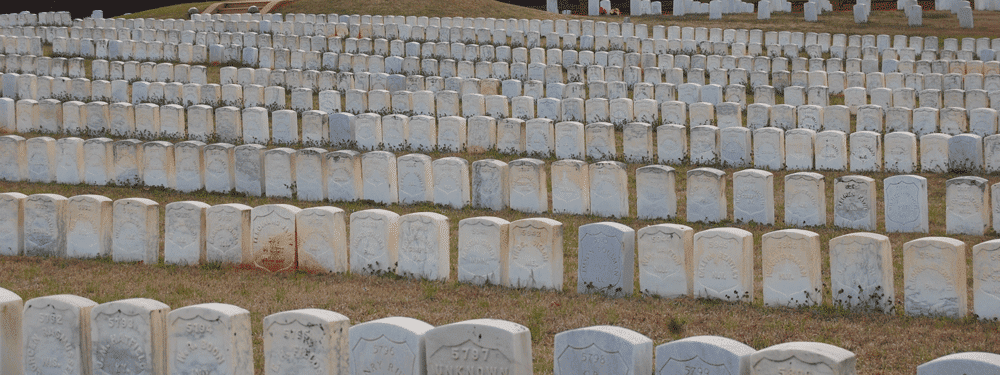
Andersonville’s Legacy and Memorialization
Following the war, Andersonville became a lasting symbol of suffering and sacrifice. In 1865, Clara Barton and former prisoner Dorence Atwater helped identify the graves of thousands of Union soldiers who had died there, ensuring they received proper recognition. Andersonville National Cemetery was established to honor those who perished, with over 13,000 men laid to rest in marked graves. The site became a place of mourning and remembrance, a solemn tribute to the soldiers who endured unimaginable hardship behind its stockade walls.
Today, Andersonville is preserved as the Andersonville National Historic Site, which includes the National Prisoner of War Museum. The museum serves as a broader educational resource, highlighting the experiences of American POWs throughout history. Through exhibits, survivor testimonies, and historical records, visitors gain a deeper understanding of the challenges faced by prisoners of war, not just in the Civil War, but in conflicts spanning generations. The preservation of Andersonville ensures that its history is studied, remembered, and never repeated.
Andersonville remains a powerful reminder of wartime suffering and continues to influence modern discussions on the ethical treatment of prisoners. The horrors endured by those confined within its walls serve as a stark warning about the consequences of neglect and inhumanity in times of war. Military leaders and policymakers have studied Andersonville as an example of what must be avoided, reinforcing the importance of humane treatment for captives under the Geneva Conventions. The site stands as both a memorial and a lesson, ensuring the sacrifices of those who suffered there are never forgotten.



![[Video] Today in History: August 30, 1862 — Second Battle of Bull Run: Lee’s Decisive Victory](https://historychronicler.com/wp-content/uploads/2025/08/Screenshot-2025-08-30-at-12.50.39-PM-768x512.jpg)

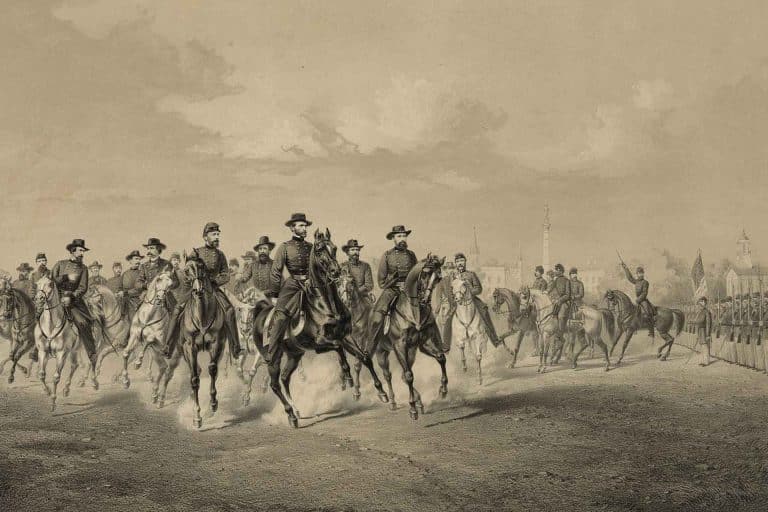
![[VIDEO] Wilmer McLean's Unusual Connection to the American Civil War](https://historychronicler.com/wp-content/uploads/2025/08/Screenshot-2025-08-28-at-4.27.46-PM-768x512.jpg)
![[Video] John Paul Jones and the Battle of Serapis 9.23.1779](https://historychronicler.com/wp-content/uploads/2025/09/Screenshot-2025-09-23-at-12.34.22-PM-768x512.jpg)
I appreciate the time, research and effort that you put into this. While there are quite a few things that I disagree with (the prison was never liberated; most of the prisoners were sent away in the fall of 1864; Atwater only served as a clerk between June of 1864 and his exchange in Feb, 1865 and the Confederate prison records were also used during the establishment of the National Cemetery, being the only source of records of the deaths after Atwater left), I’m probably best qualified to address the question of the “Renegades,” because I spent years researching them, leading to the publication of the only book to date that deals exclusively with them, “The Andersonville Raiders; Yankee Vs Yankee in the Civil Wars Most Notorious Prison,” published by Stackpole Books in 2022.
Rather than the “Renegades,” most prisoners referred to this group as “Raiders.” There were probably between 80 and 120 of them working in the stockade, and most of them lived in the Southern end of the prison. The raiders had been robbing other prisoners long before Camp Sumter (the official name of the prison at Andersonville) was built, including at Belle Isle and Salisbury (where they were referred to as “Muggers”). The prisoners did fight back against them, and if caught they would be “roughed up” and punished by things like having half of their head and beard shaved as a visual warning to other prisoners or being carried around the prison astride a narrow rail. The prisoners from the Battle of Plymouth had a system in place where, if one of them was accosted, all he had to do was shout “Plymouth!” and any man in earshot who’d been captured there would come rushing to his aid.
But the prisoners from Plymouth also upped the ante, because they’d just been paid before they were captured, including back pay, and they were allowed to keep this money as one of their terms of surrender. This sudden influx of cash, at the beginning of May, 1864, caused the raiders to go from a “nuisance” (prisoner Warren Lee Goss’s word) to a more ruthless, violent, and persistent threat. Things came to a head on June 29th, when an older prisoner named “Dowd” (actually John G. Doud of New York) fought back when four raiders (Delaney, Sarsfield, Sullivan, and Muir) accosted him and beat him within an inch of his life (he never regained his health and died in 1869). Seeing Doud, Henry Wirz demanded that the men responsible be handed over to him and sent in his guards to aid in the arrests. Dozens of men were singled out, so many that Wirz somehow decided which were the “worst” (including the four mentioned above) and ordered the rest to be forced back into the stockade one at a time. They “ran the gauntlet, having to pass through lines of prisoners armed with stick, clubs and whatever else was on hand. One man was killed outright, beaten to death. (If you want to lose sleep, consider that three of the fourteen who were tried were found “Not guilty,” raising the possibility that an innocent man was beaten to death by an angry mob.)
Wirz made the downfall of the raiders possible. He authorized the arrests; provided guards to go in and assist the prisoners in removing accused raiders; held the accused outside the stockade; assisted in the selection of the jury, which was made up of the most recently arrived sergeants on the grounds that they would be the least prejudiced (one of them had only been at the prison eleven days when he was selected as a juror), provided a space for the trial to be held, got authorization from his higher ups to follow through with the jury’s decision to hang six of those found guilty (including the four who’d attacked Doud), and provided the wood and rope for the gallows, personally handing over the men for execution on the evening of July 11th. (There is a story that as he did so, he claimed to have had nothing to do with the proceedings in a speech as he handed the men over to be hanged, but this is not true; this sentence does not appear in any account until John McElroy published his rather sketchy “memoir” in 1879, ever recounting of Wirz’s speech before that omits it.)
My own take on the situation is that the “regulators” who are named in McElroy’s book were likely a rival gang who took advantage of the attack on Doud to eliminate a rival gang – if you look them up in period newspapers, some of them had pretty scary criminal records including convictions or allegations of robbery, attempted murder, extortion and rape, but that’s going to be dealt with in the book I’m working on now.
The day after the raiders were arrested, some of the prisoners who’d been robbed went to the raiders’ tents to try and get their stuff back. When they couldn’t find it, they decided that maybe the raiders had buried it for safe keeping, and so they started digging under their tents. Under one tent, they didn’t find the stolen goods, but instead found two decomposed bodies. You don’t end up dead under someone’s tent in those circumstances unless they put you there, so at least one of the accused raiders not only murdered his would be victims, who presumably tried to resist, but then slept on top of their dead bodies. (I’ve read multiple diaries that relate this, but none identify which raider’s tent it was – I suspect James Sarsfield’s, but have no proof.) So as far as the hanging goes, these guys had it coming.
Thank you so much for sharing your detailed insights and for taking the time to deepen the discussion around Andersonville. We truly appreciate your research and have updated our article to reflect several of your points—such as clarifying that the prison was never “liberated,” noting the transfer of most prisoners in the fall of 1864, and correcting the timeline and role of Atwater. We’ve also refined our discussion on the group historically known as the “Renegades,” now more accurately described as “Raiders,” incorporating the nuances you provided about their numbers, their actions, and the resulting crackdown.
Your comprehensive account—including the specifics of prisoner conflicts, the trial process led by Henry Wirz, and the broader context of these events—has been invaluable in enhancing the historical accuracy of our narrative. We thank you again for contributing to a richer understanding of this complex period in history.